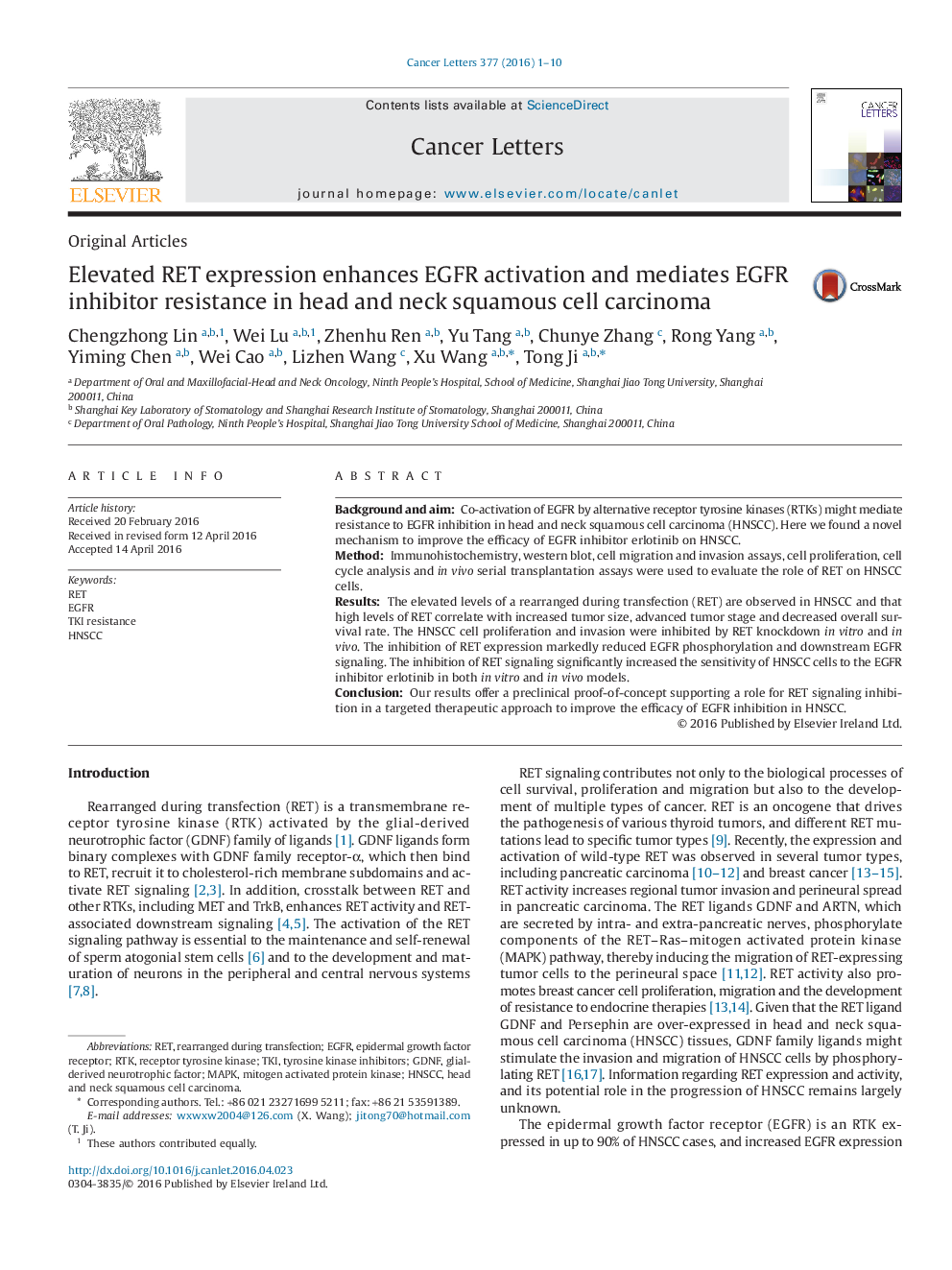| Article ID | Journal | Published Year | Pages | File Type |
|---|---|---|---|---|
| 2112314 | Cancer Letters | 2016 | 10 Pages |
•RET elevation contributes to tumor growth and negative outcome in HNSCC.•Activation of RET enhanced EGFR phosphorylation.•Dual treatment with EGFR and RET inhibitor enhances efficacy on HNSCC.
Background and aimCo-activation of EGFR by alternative receptor tyrosine kinases (RTKs) might mediate resistance to EGFR inhibition in head and neck squamous cell carcinoma (HNSCC). Here we found a novel mechanism to improve the efficacy of EGFR inhibitor erlotinib on HNSCC.MethodImmunohistochemistry, western blot, cell migration and invasion assays, cell proliferation, cell cycle analysis and in vivo serial transplantation assays were used to evaluate the role of RET on HNSCC cells.ResultsThe elevated levels of a rearranged during transfection (RET) are observed in HNSCC and that high levels of RET correlate with increased tumor size, advanced tumor stage and decreased overall survival rate. The HNSCC cell proliferation and invasion were inhibited by RET knockdown in vitro and in vivo. The inhibition of RET expression markedly reduced EGFR phosphorylation and downstream EGFR signaling. The inhibition of RET signaling significantly increased the sensitivity of HNSCC cells to the EGFR inhibitor erlotinib in both in vitro and in vivo models.ConclusionOur results offer a preclinical proof-of-concept supporting a role for RET signaling inhibition in a targeted therapeutic approach to improve the efficacy of EGFR inhibition in HNSCC.
